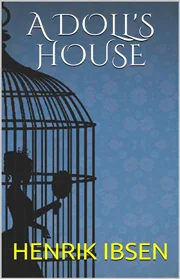
“A Doll’s House” by Henrik Ibsen revolves around the seemingly happy life of Nora Helmer, a carefree housewife. As financial troubles loom over the Helmer household, Nora’s hidden actions to save her family create a web of secrets. The play explores the consequences of societal expectations, the complexities of marriage, and the quest for personal identity in the face of societal norms. Nora’s journey towards self-discovery unfolds in a way that challenges the audience to reflect on the roles imposed by society in the 19th century.
Read A Doll’s House Flipbook:
Listen to A Doll’s House Audiobook:
Title: A Doll’s House
Author: Henrik Ibsen
Genre: Drama, Realism
Published: 1879
Setting: Norway, 19th century
Plot Summary:
• Follows the life of Nora Helmer, a housewife.
• Nora is initially portrayed as a carefree, childlike woman.
• The Helmers appear happy but are burdened by financial issues.
• Nora’s secret loan to save her husband’s life becomes a central conflict.
• The revelation strains her marriage and prompts self-discovery.
Themes:
• Women’s rights and independence.
• Social expectations and societal norms.
• Deception and the consequences of secrets.
Characters:
• Nora Helmer: Protagonist, initially naive and dependent.
• Torvald Helmer: Nora’s husband, concerned with societal appearances.
• Krogstad: Bank employee, involved in Nora’s secret loan.
• Mrs. Linde: Nora’s friend, seeking financial stability.
Symbolism:
• The doll’s house represents societal expectations.
• Tarantella dance symbolizes Nora’s facade.
• The Christmas tree symbolizes appearances versus reality.
Significance:
• Criticizes 19th-century gender roles and societal norms.
• Considered a landmark play in the realism movement.
• Controversial at the time for its feminist undertones.
Impact:
• Sparked discussions about women’s roles in society.
• Influenced the feminist movement in the late 19th and early 20th centuries.
• Continues to be studied and performed worldwide.
Controversy:
• Initial reception was mixed due to its challenging societal norms.
• Some deemed it scandalous for its critique of marriage and gender roles.
Closing Scene:
• Nora’s famous door slam signifies her departure from societal expectations.
• The ending is open to interpretation, leaving audiences to ponder Nora’s fate.